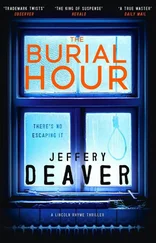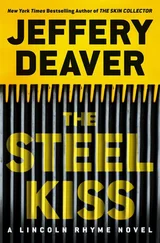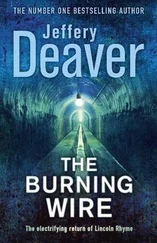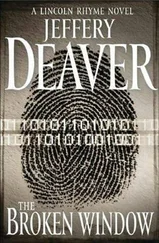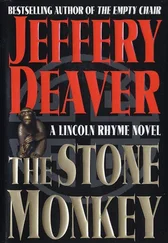And then, the kicker, Metzger told him that he too should take some precautions.
“Like what?”
“Just remember that it’d be better if there was less…well, ‘evidence’ is such a stark word. But you get my meaning.”
And Shales decided at that moment not to wipe the phone issued to him as Don Bruns. The data—and the emails and texts to and from Metzger—were encrypted, but Shales decided it would be a prudent idea for the evidence not to disappear. He also printed out dozens of documents and smuggled them out of NIOS.
Insurance.
And the fact he’d felt compelled to take those precautions made him think: Hell, maybe it was time to quit this crazy business. Shales was thirty-nine, he had a degree from the Air Force Academy and a postgrad in engineering and poli-sci. He could go anywhere.
Or could he?
With a résumé like his?
Besides, the idea of no longer helping defend his country was almost unbearable.
But how do I help my country by accidentally killing a famous journalist and hardworking guard while I’m on a mission to assassinate an unpleasant but innocent loudmouth? What about—
“Texas Center to Three Nine Seven.”
Like flipping a switch. Barry Shales was all go. “Three Nine Seven.”
“You are ten minutes to target.”
The operation command center near Fort Hood knew exactly where his drone was.
“Copy.”
“Visual conditions?”
A glance to the monitor at the right. “A little haze but pretty good.”
“Be advised, Three Nine Seven, eyes on the ground report that the task is alone in target structure. Individual who arrived an hour ago has left.”
The task…
“Roger, Texas Center. I’m taking the aircraft,” Shales said, disconnecting the autopilot. “Approaching Lucio Blanco International airspace.”
Reynosa’s airport.
“Friendly nation ATC has been advised of your flight route.”
“Roger. Descending to two thousand feet. EAD on.”
The engine audio deflectors would reduce the decibel level of the drone’s engine to about one-tenth of the regular sound. These could only be used for a short period of time, though, because they tended to make the engines overheat and there was a power loss, which could be dangerous in rough weather. Now, though, the sky was clear and virtually no wind would trouble the craft.
Five minutes later he guided 397 to about fifteen hundred feet above and a half mile from the safe house where al-Barani Rashid was presently planning or perhaps even constructing his bomb.
“In hover mode.”
Teasing the joystick.
Shales painted the target safe house with a laser. “Confirm coordinates.”
The longitude and latitude of what he’d reported would be matched to those of the stats known to be the target in NIOS’s mainframe—just to make sure.
“Texas Center to Three Nine Seven, we have geo match. Target is confirmed. What is your PIN?”
Shales recited the ten digits of his personal identification number, verifying he was who he was supposed to be and that he was authorized to fire this missile at this target.
“Positive ID, Three Nine Seven. Payload launch is authorized.”
“Copy. Three Nine Seven.”
He slipped up the cover over the arming toggle for the Hellfire missile and pressed the button.
Shales stared at the image of the safe house. Still, he didn’t push the launch button just yet.
His eyes took in the windows, the doors, the chimney, the streaks of dust on the sidewalk, a cactus. Looking for a sign. Looking for some indication that he should not launch the deadly package.
“Three Nine Seven, did you copy? Payload launch is authorized.”
“Confirmed, Texas Center. Three Nine Seven.”
He inhaled deeply.
Thought: Moreno…
And lifted the second cover, over the launch button itself, and pressed down.
There was no sound, only a faint rocking of the screen as the 110-pound missile dropped from the UAV. A green light confirmed release. Another, ignition.
“Payload away, Texas Center. Three Nine Seven.”
“Roger.” In the most bland of tones.
There was nothing more for Shales to do now, except watch the safe house disappear in a flash of flame and wash of smoke. He turned to the video.
And he saw the back door to the house open and two people exit into the courtyard between the house and garage. Rashid was one of them. A teenage boy was the other. They spoke briefly and began to kick around a soccer ball.
CHAPTER 70
BARRY SHALES FELT THE SHOCK like a physical blow.
He cracked a thumbnail jamming the digit into the red button in the middle of the weapons control panel labeled simply STOP.
This sent a signal disarming the warhead in the Hellfire. But the missile was still a deadly mass of metal and propellant, streaking at nine hundred miles an hour toward a building with less-than-perfect accuracy. It could easily kill everyone inside even if the explosives didn’t detonate.
Shales pressed the autopilot button for the drone itself and overrode the automatic guidance for the missile, taking control of the Hellfire with a small trackball on the weapons panel.
A camera rested in the nose of the missile, not far from the high-explosive payload, but at this speed and with the marginal resolution of the lens you couldn’t fly the projectile very accurately. Shales had to rely on the radar in the drone and a feed from Mexican air traffic control to steer the deadly cylinder away from the safe house.
He glanced at the monitor to the right—the drone’s camera, which was still pointed toward the soccer players. He noted Rashid pause and look up to the sky. Squint. He would have heard something, seen a glint perhaps.
The teenage boy, about to kick the dusty ball, paused too, regarding the Arab cautiously.
Behind them, Barry Shales could see, a small girl appeared and stood in the doorway of the safe house. She was smiling.
“Texas Center to Three Nine Seven, we read payload path deviation. Please advise.”
Shales ignored the transmission and concentrated on trying to steer the Hellfire, twice as fast as any jetliner, away from populated areas in the target zone. It wasn’t easy. This part of Reynosa wasn’t as dense as to the east but there were still plenty of homes and businesses and traffic. The radar gave a clear image of airliners nearby, which Shales could steer clear of, but the system didn’t reveal what was on the ground—and that was where he needed to crash the missile. And pretty damn fast; soon the propellant would be expended and he’d lose control.
“Three Nine Seven? Do you copy?”
Then on the small screen revealing what the nose camera in the missile was viewing, the image faded as it headed into overcast. He was flying blind.
“Jesus Lord…”
Words that Barry Shales, who attended church every Sunday with his wife and young sons, did not use lightly.
“Three Nine Seven, this is Texas Center. Please advise.”
He thought angrily: I’m advising you to go fuck yourself.
The haze broke for a moment and he saw that the missile was heading right for a residential development.
No, no…
A tweak of the trackball changing the course farther west.
The haze closed in again.
A glance at the radar. The terrain was mapped out but it wasn’t a satellite image, merely a traditional map, and gave no clue as to what was on the ground ahead of the Hellfire.
Only seconds remained until the propellant was gone and the deadly tube would come to earth. But where? In a child’s bedroom, in a hospital, in a packed office building?
Then an idea occurred to Shales. Releasing the missile trackball for a moment, he typed fast on the computer keyboard in front of him.
Читать дальше

